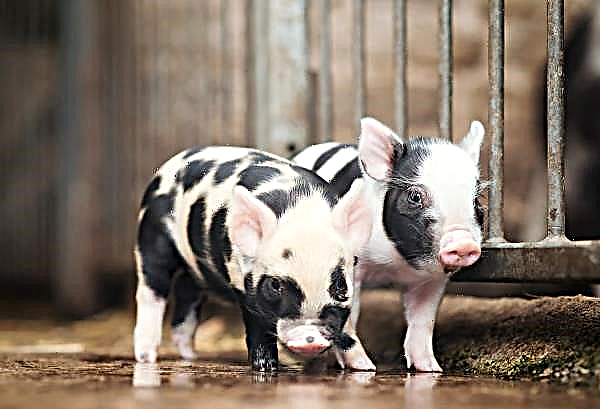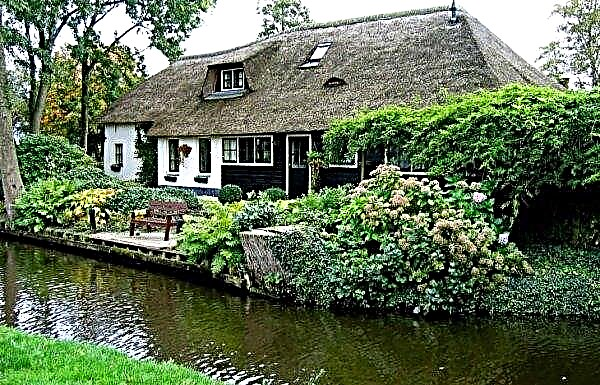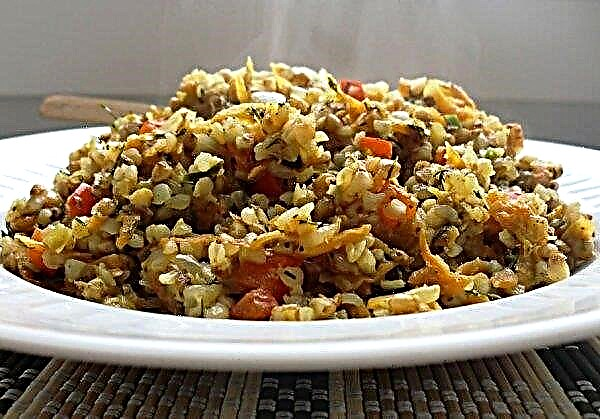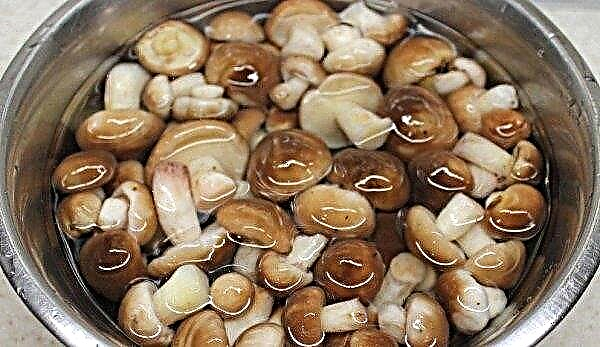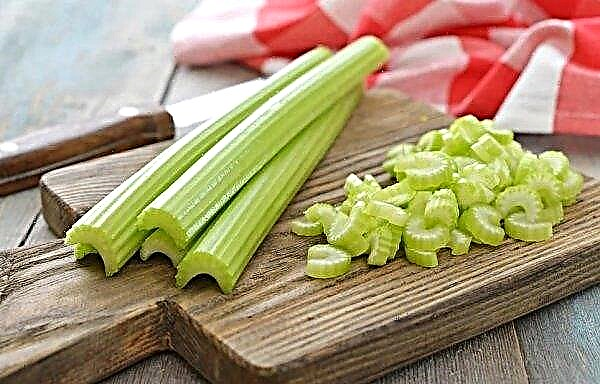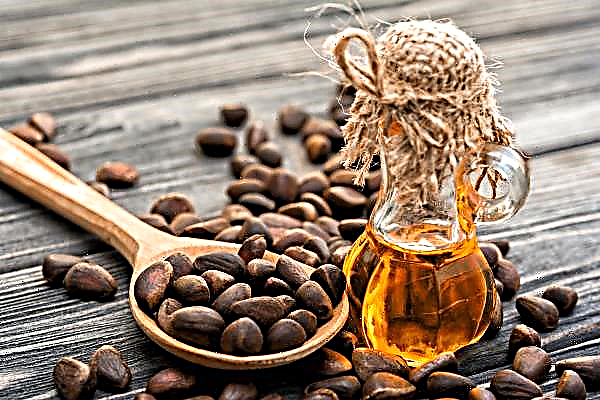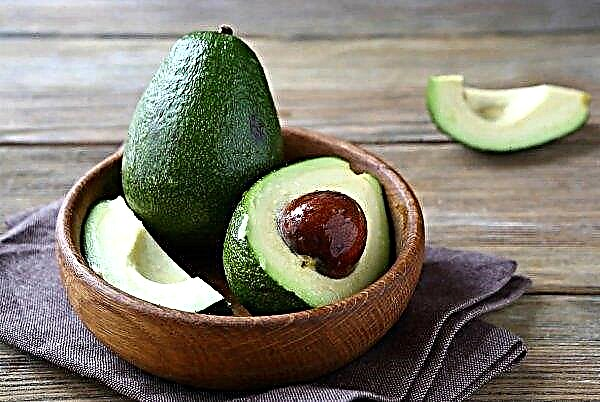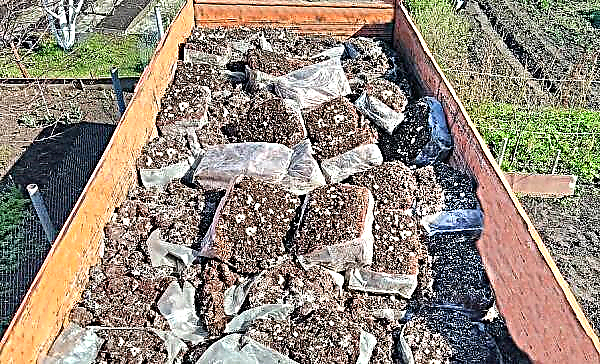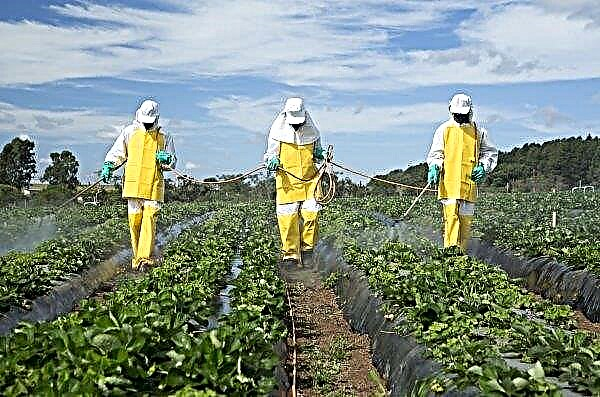It is difficult to imagine a garden where radishes would not be planted - one of the first suppliers of a rich set of vitamins to the table after winter. Traditionally, this crop is planted in the spring, but it can be planted in the fall, as they say - in the winter. How to do this correctly will be discussed in our material.
Did you know? Radish is from Central Asia. Italian Marco Polo brought it to Europe at the end of the 13th century .
Pros and cons of radish planting in the fall
- Autumn planting of radishes has a number of significant advantages, namely:
- the ability to harvest 14–20 days earlier than during spring planting, and in the case of seedlings covering with a film - 20–30 days;
- winter hardening and natural selection of planted seeds allow you to get stronger and healthier plants;
- lack of anxiety in case of spring aridity;
- receiving, from the very beginning of spring, plantings of the required amount of useful melt water, which contributes to the most rapid germination of seeds;
- minimal risk of damage by harmful insects and diseases;
- good frost resistance.
- As a disadvantage, the following can be noted:
- The need for exact compliance with the landing date. Planting radishes earlier means killing the seeds. In this case, it is better to tighten the sowing a little.
- Dependence on weather conditions, namely: the danger of short-term warming. It can provoke premature growth of seedlings, and subsequent frosts, even minor ones, will destroy them.
How to plant radishes in the winter
The autumn radish planting does not imply any particular agronomic difficulties, but there are still some features that should be considered in detail.
What varieties are best planted
The main criteria in choosing autumn radish varieties are:
- frost resistance;
- ability to tolerate light deficiency;
- resistance to shooting at a sharp change in weather conditions.
The following varieties most fully meet these requirements: Heat, Dawn, Pink-red (with a white tip).
Varieties of Heat and Dawn - early ripe. In the first, maturation occurs 15–18 days after germination, in the second - in 18–25. In addition, Zarya has a high yield, good resistance to lack of light, slightly sharp, but mild taste. Grade Rose Red - medium early, ripens 25-30 days after germination. The main advantage of the variety is the pleasant taste of the fruit.
Grade Rose Red - medium early, ripens 25-30 days after germination. The main advantage of the variety is the pleasant taste of the fruit.
Varieties Yubileiny, Mayak, Spartak, Carmen are also used as winter radishes.
When to plant: timing
Determining the timing of planting seeds is the most important issue in the agricultural technology of winter radishes. Here you need to proceed from the temperature of the soil and the environment.
Important! When planting radishes in winter in open soil, there should be a zero ambient temperature and soil temperature in the range of +2 ...+4°WITH.
For different climatic zones of the Russian Federation, the time when you need to plant radishes in the winter is different:
- in the central regions, including in the suburbs - in October, in the second decade;
- in the northern regions - in the first decade of October;
- in the south of the country - at the end of October or even at the beginning of November.
Seat selection and crop rotation
When choosing a landing place, it is necessary to proceed from the following criteria:
- soil - light fertile (sandy or sandy loamy, clay loam possible);
- groundwater depth - not less than 1.5 m;
- elevation (in the lowland, spring meltwater will wash and flood the seeds);
- good blowing and open, direct access to sunlight (with a lack of light, the vegetable will increase the tops).

- It should be borne in mind which crops previously grew on the site. The most favorable precursors of radishes on the site are:
- cucumbers
- Tomatoes
- pepper;
- potatoes;
- bow;
- legumes.
But daikon radish, cabbage and other cruciferous plants will be bad predecessors - radishes have common diseases with them. As for the neighbors, carrots, parsley, and beets are favorable for radishes. For these crops, radish acts as a “sealant” when planted.
Important! At the same place, radishes should not be grown for more than 3 years in a row. — it can drain the soil.
Bed preparation
To prepare the beds for radishes should begin in the last days of September or early October. Garbage and weeds are removed from the site, the ground is carefully dug up to the state of friability and small lumps - then it will be able to wrap each seed well. Potash and phosphorus top dressing is introduced into the soil, in addition to them it is recommended to make compost or humus at the rate of 2 kg per 1 m². If the acidity of the soil is too high, slaked lime is used to reduce it. In addition, you need to take care of the soil, which will be sprinkled with planted seeds. The substrate sold in specialized stores is best suited for this - it is already enriched with fertilizers and has the necessary loose structure.
If the acidity of the soil is too high, slaked lime is used to reduce it. In addition, you need to take care of the soil, which will be sprinkled with planted seeds. The substrate sold in specialized stores is best suited for this - it is already enriched with fertilizers and has the necessary loose structure.
The prepared substrate must be stored in a warm room. After completion of soil preparation and before the onset of frost, beds are formed under the radish, which are then covered with a film - in order to prevent them from flooding with rain and getting weed seeds there.
Did you know? Radish possesses its characteristic taste thanks to the mustard oils that it contains. They help cleanse the human body of bacteria and viruses.
Seed selection and preparation
When purchasing seeds for planting, it is desirable that they be from different producers (this is indicated on the package) - then a certain “natural selection” will be obtained and the strongest will survive. After the seeds are acquired, they should be sorted out, removing specimens with signs of mold and voids. Then they are calibrated using a sieve with a mesh size of 2 mm - the smallest are rejected, as a result only large ones remain. Next is the preparation of seeds.
The algorithm of actions is as follows:
- Soaking in wet material (cloth or gauze) for 2–4 days. According to experienced gardeners, such a procedure will subsequently give a friendly and rapid growth.
- After this, the seeds are immersed in a solution of potassium permanganate for half an hour - thus they are disinfected from fungal diseases.
- The next step is labeling. Initially, the seeds are kept for 2-3 minutes in a 1% iodine solution, and then they are sprinkled with chalk - due to this they are better visible on the ground, which facilitates their uniform distribution over the bed.
- Before planting the seeds in the country, they are cooked - they are placed in hot water for 20 minutes. This prevents the future plant from dry rot.
- After all the manipulations, the seeds are well dried.
Scheme and depth of landing
Direct landing is as follows:
- In shallow grooves (not more than 5-6 cm) with an interval between rows of 20 cm dry seeds are laid (they should be 2 times more than in spring sowing).
- Place bookmarks sprinkled on 1.5–2 cm with a dry warm layer of the prepared substrate.

Further care
After planting radish seeds, they are sheltered for the winter. To do this, use mulch or coniferous branches, which are laid in a 20-cm layer. In winter, the beds are insulated with snow - this will help the seeds to successfully winter. With the onset of heat, the shelter is removed and waiting for the first shoots. First of all, it is necessary to ensure their optimal density - not closer than 5 cm from each other. To do this, remove the weakest seedlings.
Watering is carried out depending on natural conditions. A moisture deficit will give the fruit stiffness and bitterness, and an excess - wateriness and lack of taste. With a lack of natural rainfall, watering is carried out with moderate, a small amount of water, followed by mandatory loosening of the soil - in order to avoid the formation of a crust on the ground.
Nitrogen fertilizing will also be useful, but moderate, otherwise the plant will begin to intensely increase the tops. The fight against harmful insects and diseases should not be overlooked. Cruciferous fleas, whitewash, bacteriosis, keel and blackleg are dangerous for radishes sown before winter with the arrival of heat.
To get rid of insect pests, it is necessary to pollinate the emerged seedlings with a composition of ash and lime (tobacco dust), taken in a ratio of 1: 1. Three procedures carried out with an interval of 4 days will be enough to get rid of pests. You can also apply watering the seedlings with a decoction of onion husks, which repels insects. Bordeaux mixture and milk of lime (1 part lime to 20 parts water) are effective against bacteriosis and keel. A special solution prepared from 50 g of laundry soap and 1 tbsp will help to overcome the black leg that struck the plant. l copper sulfate diluted in 10 liters of water.
Bordeaux mixture and milk of lime (1 part lime to 20 parts water) are effective against bacteriosis and keel. A special solution prepared from 50 g of laundry soap and 1 tbsp will help to overcome the black leg that struck the plant. l copper sulfate diluted in 10 liters of water.
Planting radishes before winter is a somewhat risky undertaking, but with strict adherence to all recommendations in the early spring, you will get a fresh crop rich in vitamins that are so necessary for a person at this time.

